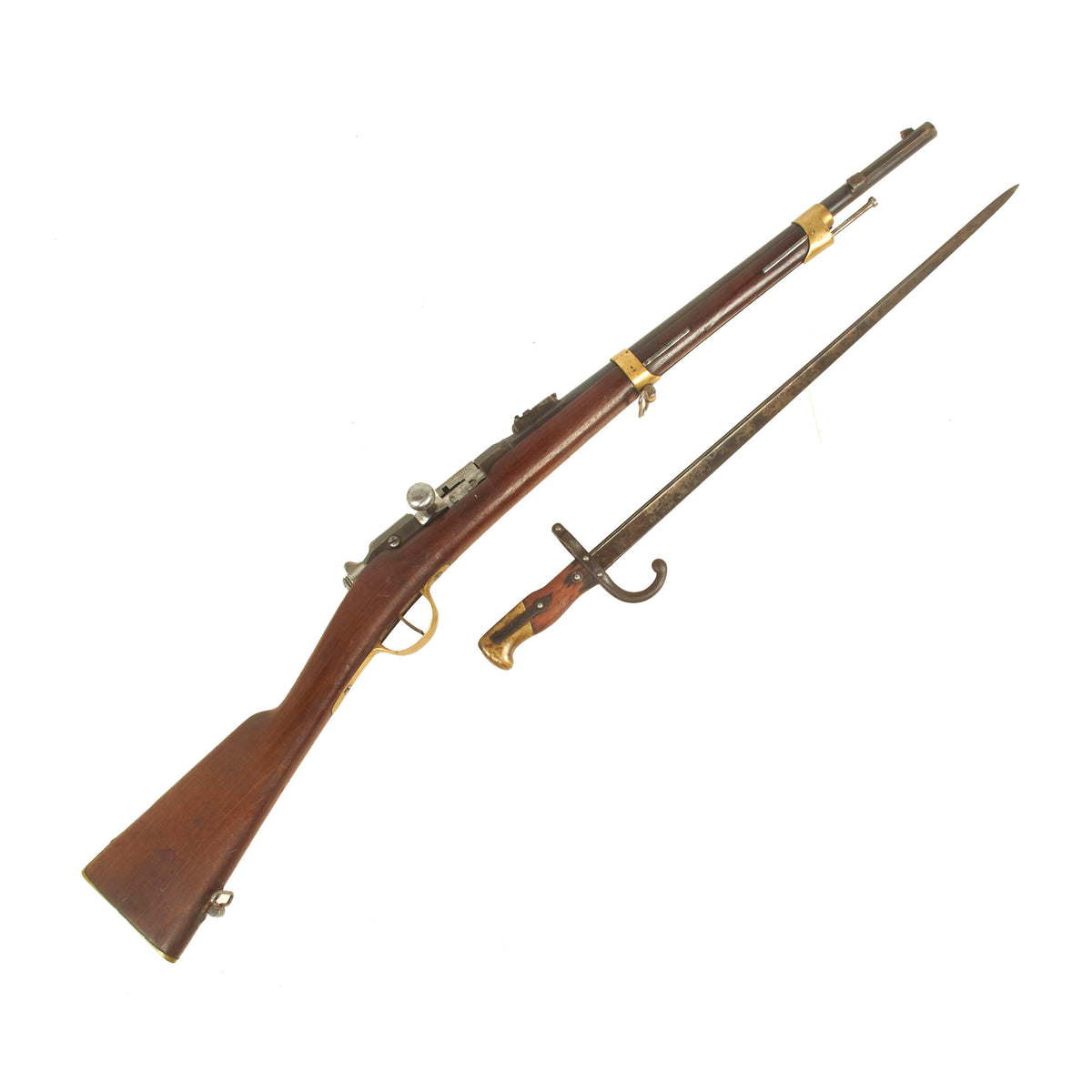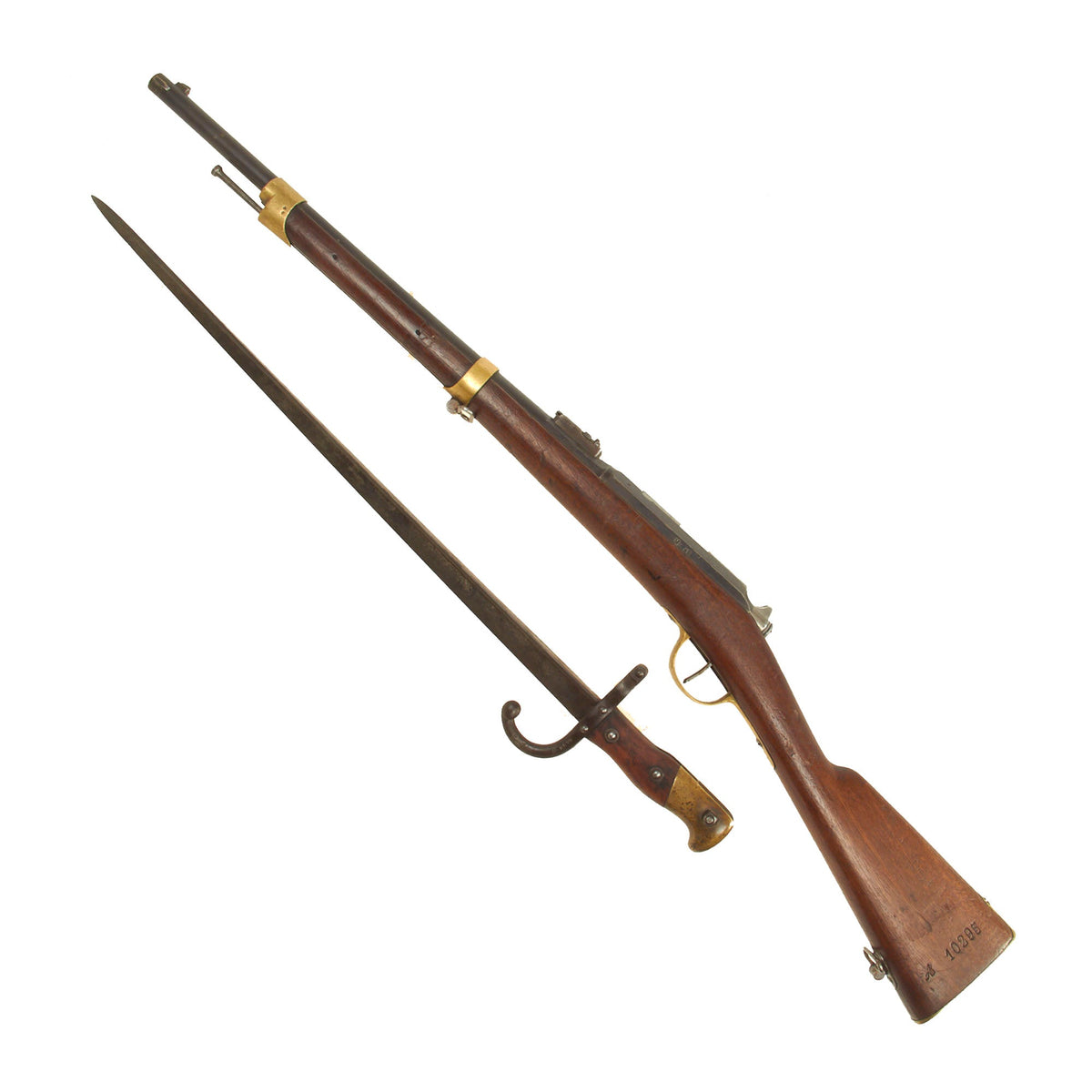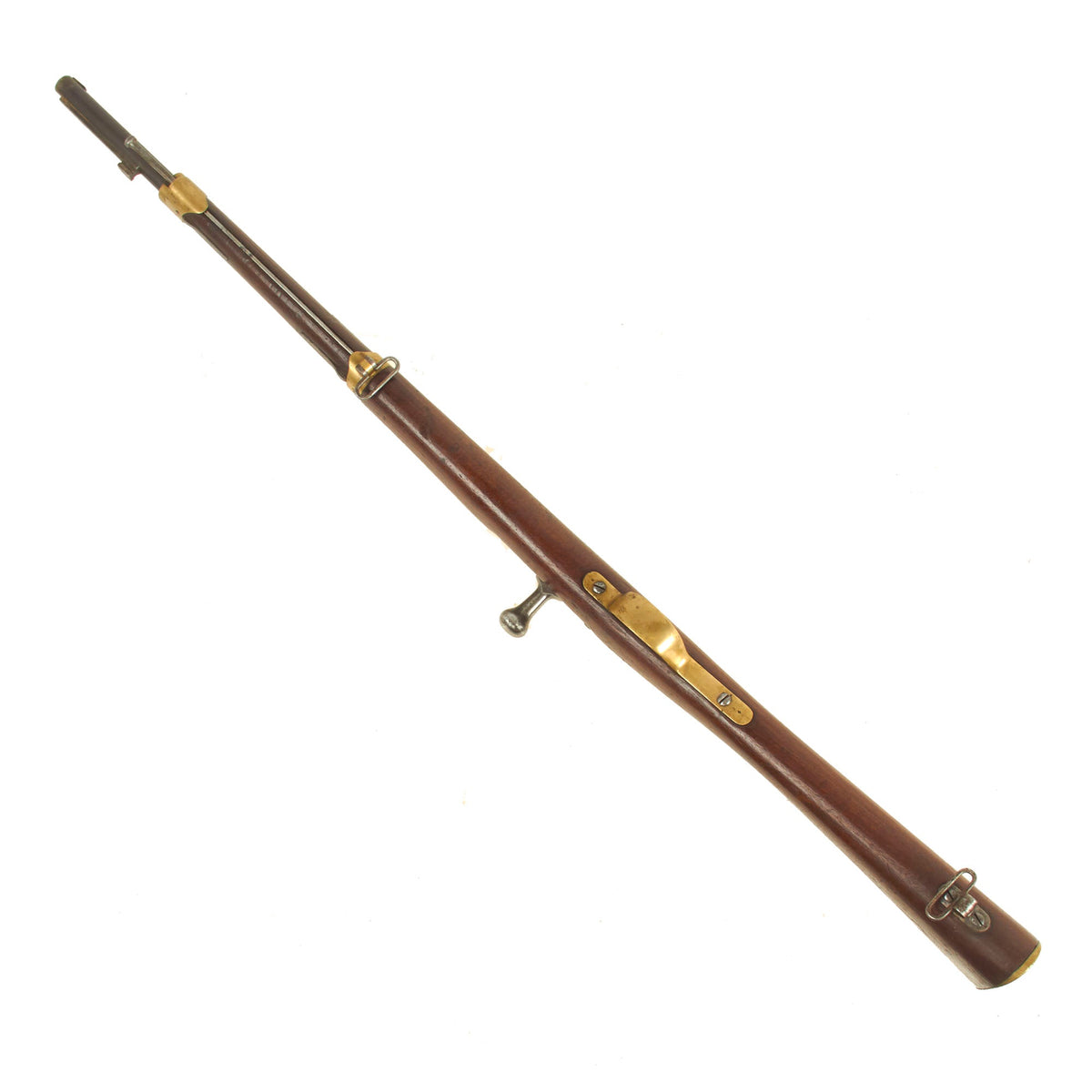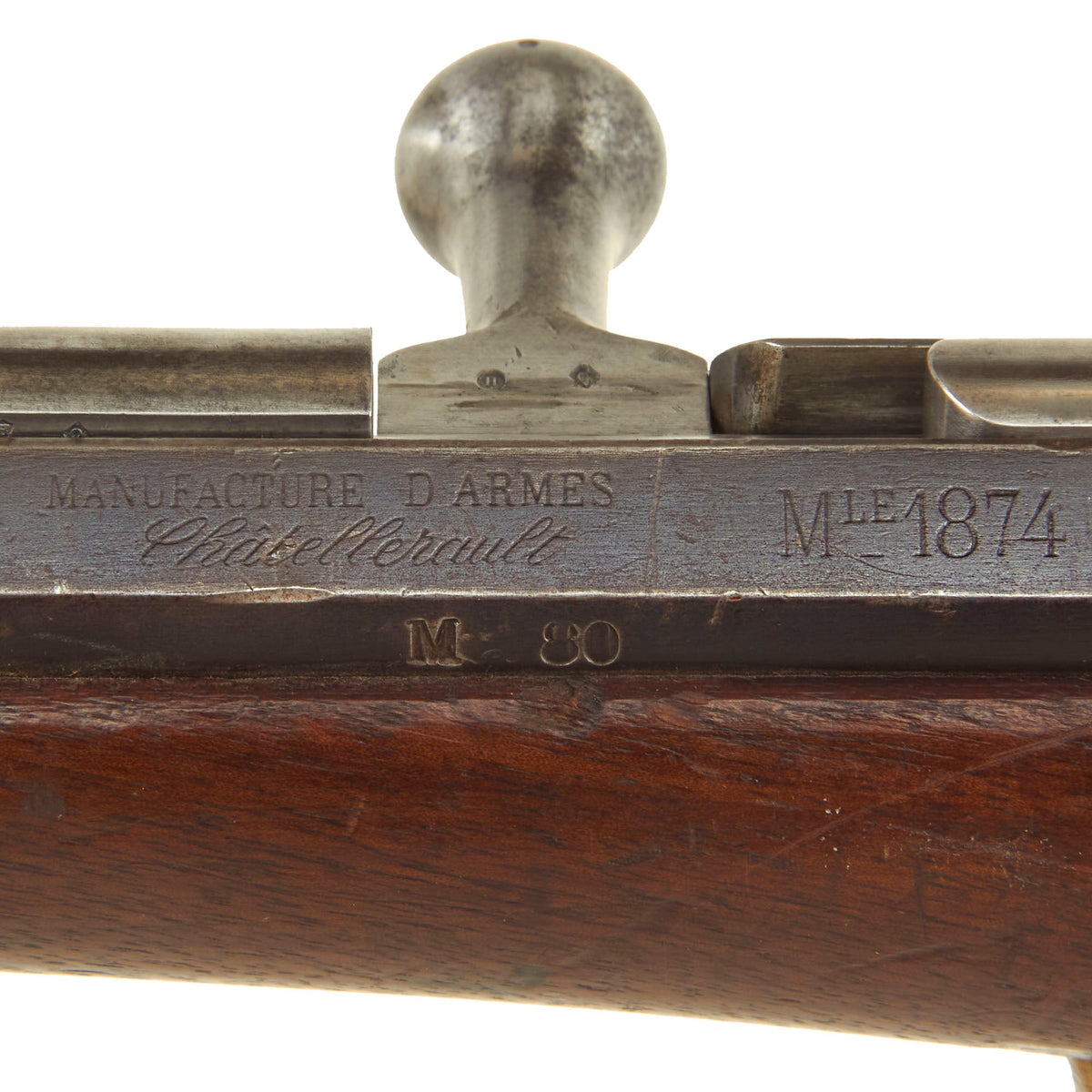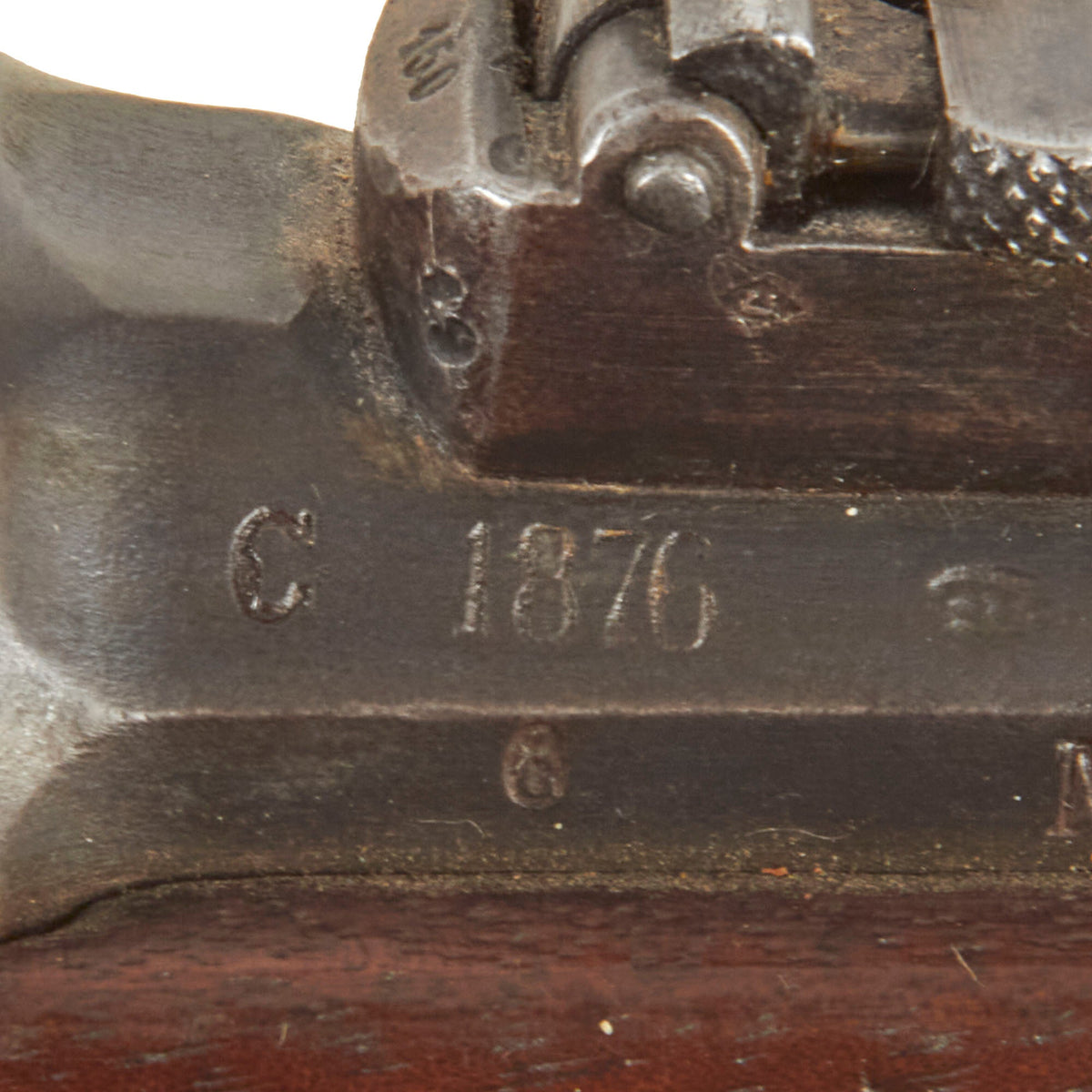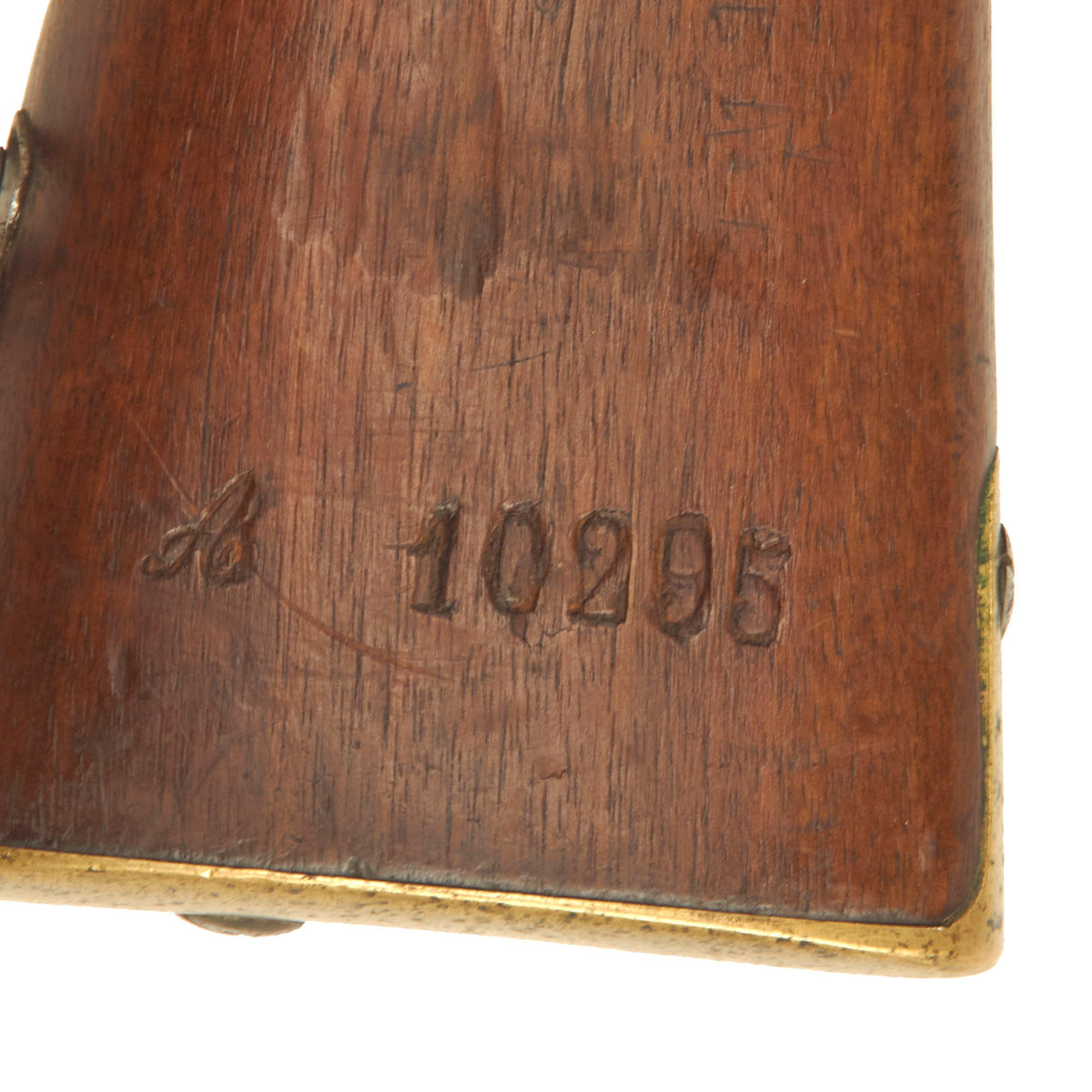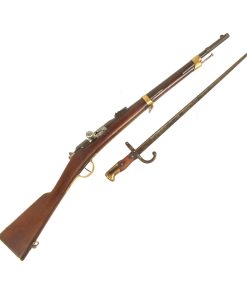Original French Fusil Gras Modèle 1874 M80 Artillery Carbine by Châtellerault with Brass Fittings & Bayonet – Dated 1876 Original Items
$ 1.295,00 $ 323,75
Original item: Only One Available. The Fusil Gras Modèle 1874 M80 was one of the primary French service rifle of the late 19th century. The Gras used by the French Army was an adaptation to metallic cartridge of the Chassepot Mle 1866 breech-loading rifle, developed by Colonel Basile Gras. The first examples were in fact conversions of the Chassepot, replacing the needle-fire system with a bolt action one.
This is a very rare example of the Fusil Gras Modèle 1874 M80 Artillery Carbine, which we have very seldom seen an example of! It has all brass fittings, and comes complete with a full length bayonet. This is one of the shortest variations made, measuring 39 inches in overall length with a barrel juts 19 inches long. It still has standard sling fittings, and does not have the downturned bolt, though it is was replaced at arsenal. The receiver on the rifle is clearly marked MANUFACTURE D’ARMES / Châtellerault over M80, and to the right is the model designation Mle 1874. The rifle has an issue date marking of C. 1876 stamped into the right barrel nocks form, for manufacture at the Imperial Arsenal of Châtellerault in 1876.
The carbine is marked with serial number FA 10295, which is present on the barrel, stock, and bayonet lug. The bolt and cleaning rod are non-matching, replaced at arsenal long ago. The metalwork is in very good condition, still showing strong bluing overall on the barrel and receiver, with just a bit of wear and peppering in places. The bolt is still the correct bright steel, with just a bit of light staining. The bolt still moves correctly and dry fires, though it is definitely a bit stiff. The bore is in very good condition, with strong lands and grooves with a mostly bright finish. There is just a bit of wear and past fouling in areas, now cleaned away.
The carbine comes with all original brass mounts and an intact cleaning rod, and the correct proof marks are present on the various components. The stock is in very good condition with a great red brown color, though it appears to have been refinished at arsenal, which has made the markings faint. There are some small chips and gouges, but no major damage. The cartouche on the right side of the butt stock is all but worn away, though the red insert is still present.
Included with this carbine a correct issue unshortened Triangular-bladed Model 1874 “Gras” sword bayonet, which is in very good condition, showing some light rust on the blade. The T-shaped back of the bayonet is marked M’re D’Armes de St. Etiénne Février 1879, indicating manufacture at the St. Etiénne Arsenal in February 1879. The hilt is in good used condition, with nice wood and a good brass pommel, though the steel components show oxidation, and the top of the release button is broken off.
A great example of a rare French Gras Artillery Carbine, one of the few that we have ever encountered! Complete with a full length bayonet and ready to display!
Specifications (Carbine):-
Year of Manufacture: 1876
Caliber: 11×59mmR Gras
Cartridge Type: Centerfire Cartridge
Barrel Length: 19 Inches
Overall Length: 39 Inches
Action type: Bolt-Action
Feed System: Single Shot
Specifications (Bayonet):-
Blade Length: 20 5/8″
Blade Style: T-shaped
Overall length: 25 3/8″
Crossguard: 4”
The French Fusil “Gras” Modèle 1874 Rifle had a caliber of 11mm and used black powder centerfire cartridges that weighed 25 grams. It was a robust and hard-hitting weapon, but it had no magazine and so could only fire one shot after loading. It also had a triangular-shaped sword bayonet, known as the Model 1874 “Gras” sword bayonet. It was replaced by the Lebel rifle in 1886, the first rifle to use smokeless gunpowder. In the meantime, about 400,000 Gras rifles had been manufactured.
The metallic-cartridge Gras was manufactured in response to the development of the metallic cartridge designed by Colonel Boxer in 1866 (Boxer cartridge), and the British 1870 Martini-Henry rifle. Those were soon emulated by the Germans with the 1871 Mauser.
The Hellenic Army adopted the Gras in 1877, and it was used in all conflicts up until the Second World War. It became the favourite weapon of Greek guerrilla fighters, from the various revolts against the Ottoman Empire to the resistance against the Axis, acquiring legendary status. The name entered the Greek language, and grades (γκράδες) was a term colloquially applied to all rifles during the first half of the 20th century. It was manufactured by various arms factories in France, though most of the rifles sent to Greece were made by the ŒWG Austrian Arms Factory at Steyr.
NOTE: International orders of antique firearms MUST be shipped using UPS WW Services (courier). USPS Priority Mail international will not accept these. International customers should always consult their country’s antique gun laws prior to ordering.
Fast Shipping with Professional Packaging
Thanks to our longstanding association with UPS FedEx DHL, and other major international carriers, we are able to provide a range of shipping options. Our warehouse staff is expertly trained and will wrap your products according to our exact and precise specifications. Prior to shipping, your goods will be thoroughly examined and securely secured. We ship to thousands clients each day across multiple countries. This shows how we're dedicated to be the largest retailer on the internet. Warehouses and distribution centres can be located throughout Europe as well as the USA.
Note: Orders with more than one item will be assigned a processing date depending on the item.
Before shipping before shipping, we'll conduct a thorough inspection of the items you have ordered. Today, the majority of orders will be delivered within 48 hours. The delivery time will be between 3-7 days.
Returns
The stock is dynamic and we cannot completely manage it because multiple stakeholders are involved, including our factory and warehouse. So the actual stock may alter at any time. It's possible that you may not receive your order once the order has been made.
Our policy is valid for a period of 30 days. If you don't receive the product within 30 days, we are not able to issue a refund or an exchange.
You can only return an item if it is unused and in the same state as the day you received it. You must have the item in its original packaging.
Related products
Uncategorized
Uncategorized
Uncategorized
Uncategorized
Uncategorized
Uncategorized
Uncategorized
Angolan Rebel 1970s era 60mm Inert Display Mortar from Angolan Civil War Original Items
Uncategorized
Uncategorized
Band of Brothers ORIGINAL GERMAN WWII Le. F.H. 18 10.5cm ARTILLERY PIECE Original Items
Uncategorized
Uncategorized
Uncategorized
Uncategorized
Uncategorized
Australian WWII Owen MK1 Machine Carbine SMG Custom Fabricated Replica with Sling Original Items
Uncategorized
Uncategorized
Uncategorized
Uncategorized
